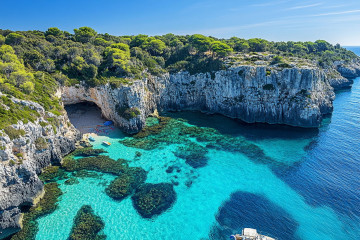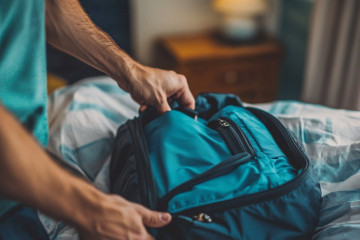Is it possible to travel to Cuba as an American in 2023? Yes, it is! Here are 5 important things you need to know before visiting Cuba next year.
Cuba is a beautiful and fascinating destination that was cut off for many decades.
In the 1960s, Cuba closed to American travelers, and it was very difficult to visit the country until diplomatic ties were restored in 2015.
Cuba closed again in 2020 due to government restrictions to the pandemic, but it’s now open for travel again.
With Delta resuming flights to Cuba in spring 2023, and other airlines including American and JetBlue already offering nonstop flights to Cuba, this destination is accessible for American travelers once more.
Here are 5 things to know before you go:
1. You must declare a “category” for your trip.
While it’s still not technically possible for Americans to visit Cuba for “tourism” purposes, you can choose from 11 other categories for your trip.
These categories include things like family visits, journalism, humanitarian projects, religious activities, and support for the Cuban people.
Support for the Cuban people is the category that most travelers put because it’s very broad.
And there are plenty of ways to actually show support for the Cuban people on your trip: Shop from local artisans, hire local tour guides, attend live music or dance performances, and stay at casa particulares (more on this later.)
2. Obtain a Cuban Tourist Card.
In order to visit Cuba, you’ll need a Cuban Tourist Card, which is like a visa. This can be purchased directly from your airline, typically at the gate at the airport (or in some cases, online in advance.)
The Cuban Tourist Card costs between $50 and $100 if you buy it from your airline, or around $144 if you buy it directly.
3. It’s harder to stay connected in Cuba.
Although the Internet situation has been improving in Cuba over the past few years, it’s still not what most American travelers will be accustomed to.
Internet in Cuba is controlled by one government provider, ETECSA. There are currently more than 1,000 WiFi hotspots around the country (with the majority in Havana.) These hotspots are located in public parks and hotels. Private homes do not have Internet access.
You can purchase a WiFi card from an ETECSA office for around $1 USD per hour. You can buy the cards at hotels too for an inflated rate, usually $2 up to $10 USD per hour.
Your American phone plan may work for texts and phone calls in Cuba if you have AT&T or Verizon, but roaming charges are high.
Also, since the government controls the Internet in Cuba, lots of websites and social media networks are blocked.
4. Stay in casa particulares.
Casa particulares are one of the most popular forms of accommodation in Cuba and the best way to experience the country.
In a casa particular, you are staying in a local’s home instead of supporting a hotel that is partially or fully owned by the government. Typically, a casa particular will include a homemade breakfast.
They’re also much more affordable than hotels in Cuba. This is a great way to support the Cuban people on your trip and gain a deeper understanding of what life is really like in Cuba.
5. Cash is king.
Unsurprisingly, your American credit and debit cards will not be accepted at most places in Cuba.
Cuba is still very much a cash-based society, and since they have a closed currency, you will not be able to change your U.S. dollars for Cuban pesos before you arrive. Instead, you’ll want to bring cash to change at the airport when you arrive in Cuba.
To avoid having to bring a large quantity of cash, you may be able to use your credit or debit card to pre-book many elements of your trip, including casa particulares and local activities or guided tours.


